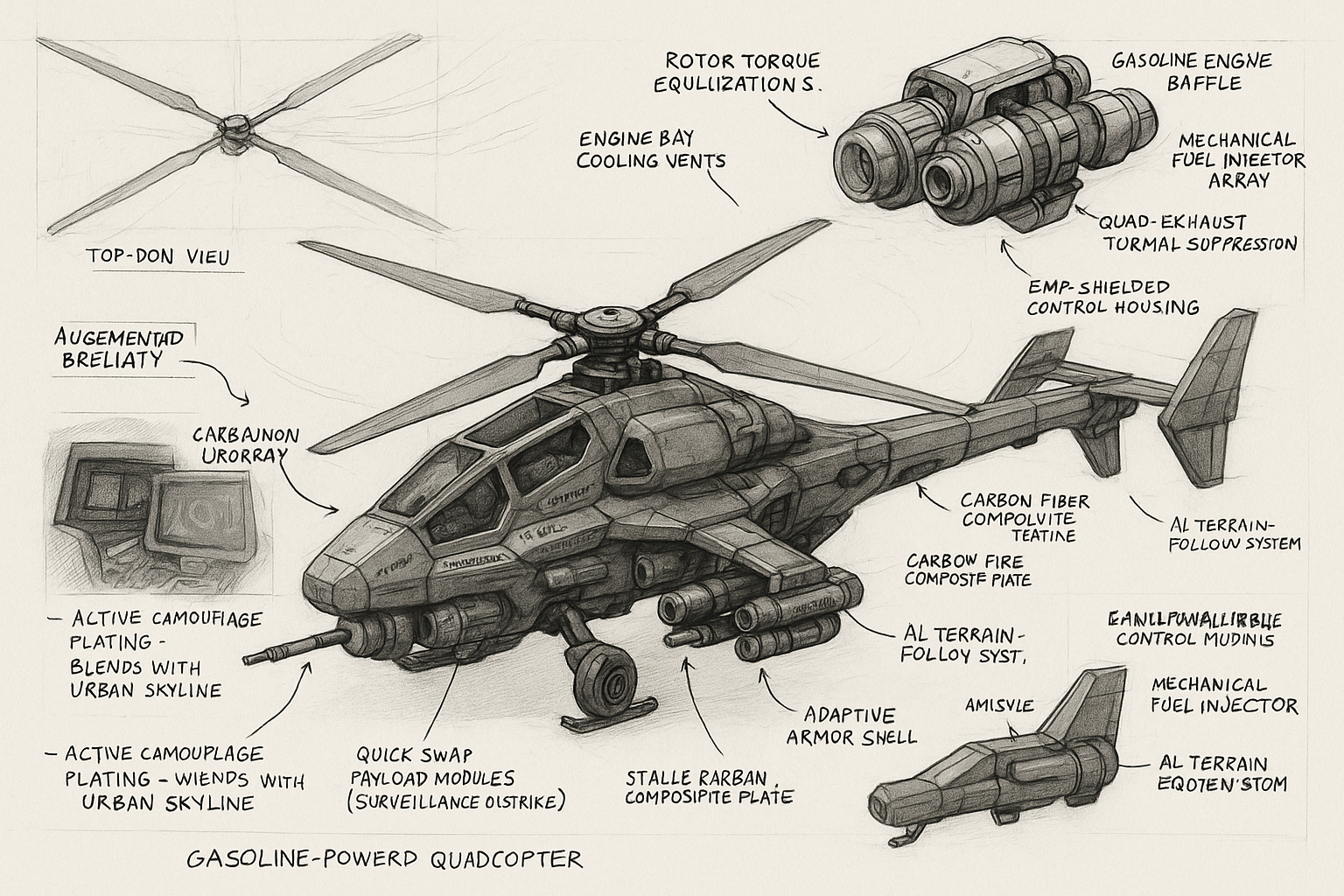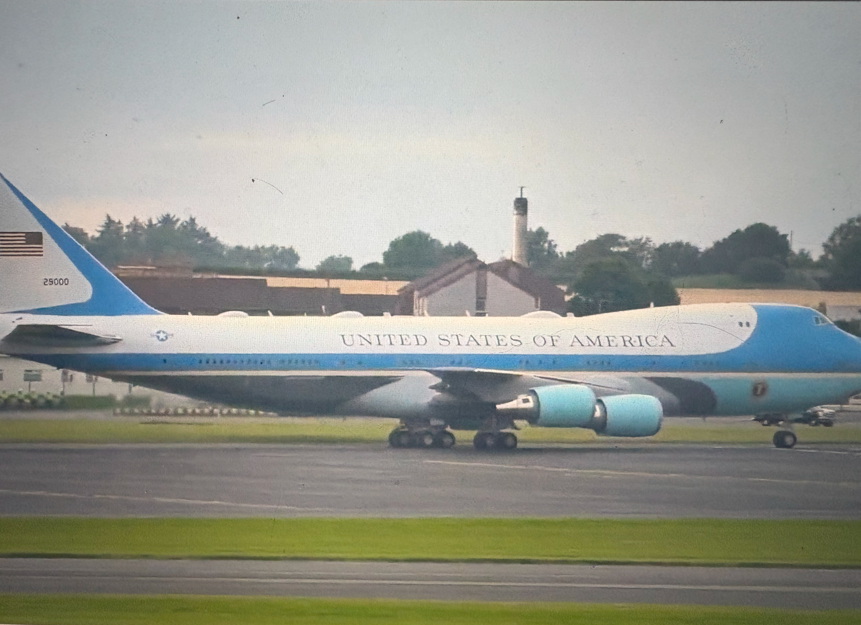illphated
Gasoline-Powered Crewed Quadcopter (Cargo + Passenger)
1. GENERAL OVERVIEW
Vehicle Type: Vertical Takeoff and Landing (VTOL) Quadcopter
Powerplant: 4 x 2-stroke gasoline engines
Flight Control: Fly-by-wire with redundancy and electronic stabilization
Capacity: 1 pilot + 100 kg cargo
Flight Time: ~1.5 hours
Max Speed: 100 km/h
Range: 120–150 km
—
2. MAIN COMPONENTS REQUIRED
A. Frame & Structure
Aerospace-grade aluminum or carbon fiber composite tubing
Reinforced undercarriage with vibration dampening
Lightweight modular cargo rack system
B. Propulsion System
4x 2-stroke gasoline engines (e.g., Zenoah G800B2 or similar)
Engine mounts with vibration isolation
Direct-drive or reduction gear coupling to propellers
C. Rotors
4x Carbon fiber or composite propellers (diameter: 1.2–1.5m)
Adjustable pitch system (mechanical or servo-driven for throttle response)
D. Fuel System
Centralized fuel tank (15–20L capacity)
Fuel pumps and filters for steady delivery under load
Engine temperature and fuel flow sensors
E. Control System
Custom-built flight computer (e.g., ArduPilot or PX4 with extended firmware for combustion engines)
Gyros, accelerometers, GPS, barometer
Manual joystick plus failsafe autonomous stabilization
Telemetry module
F. Cockpit & Safety
Enclosed polycarbonate canopy
Safety harness and seat for the pilot
Emergency ballistic parachute system
Fire suppression and engine cut-off switches
G. Cargo Bay
Modular bay with quick-release locks
Payload balancing system and anti-vibration mounting
—
3. BUILDING STEPS (HIGH-LEVEL)
1. Design & CAD modeling – Map out weight distribution, center of gravity, and airflow.
2. Frame fabrication – Cut and weld frame to spec, ensuring symmetry and strength.
3. Engine & prop installation – Mount engines with vibration dampers, align props.
4. Fuel system integration – Route lines securely, test flow and safety valves.
5. Electronics setup – Install flight controller, sensors, battery backup for controls.
6. Testing & calibration – Ground tests for RPM sync, control response, and vibration.
7. Flight trials – Begin tethered, then untethered low-altitude tests, logging data.
—
4. FEASIBILITY & WHY IT’S A GREAT IDEA
Fuel efficiency & endurance: Gasoline offers higher energy density than batteries, extending flight time.
Mechanical simplicity: Gas engines are robust, field-repairable, and less dependent on high-voltage electronics.
Rural & Off-grid Use: Ideal for delivering supplies to remote areas where electrical recharging is impractical.
Cargo + Crew Versatility: Enables pilot-led missions with critical cargo (e.g., emergency supplies, tools, or rescue equipment).
Lower Costs vs. eVTOLs: Less reliance on costly lithium battery packs or complex electric motors.
EmailURL







e7yvhy
dd8zcx
u3a1dp
c545de